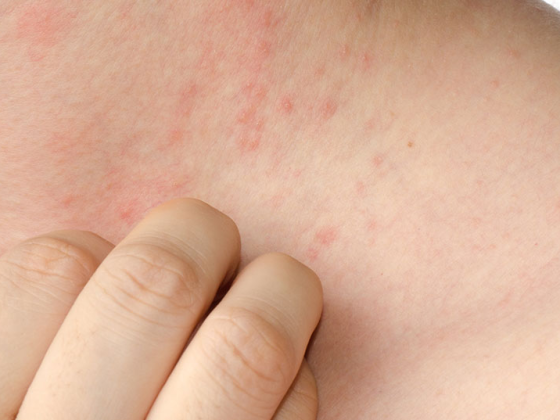If the calves hurt quickly even at a normal walking pace and walking breaks have to be taken repeatedly, this may be an indication of peripheral arterial occlusive disease (PAVD). The incidence of pAVD increases significantly with age, affecting about one-fifth of people over 65 years of age. Despite the increased risk of vascular occlusion, heart attack or stroke, experts believe that PAOD is still underestimated and often not treated according to guidelines.
The majority of those affected are unaware of the pathological vascular changes, because at an early stage they are not yet noticeable in the form of pain. “Even without the characteristic symptoms, however, pAVD is easy to diagnose – general practitioners should actively screen elderly patients for this condition,” says Prof. Viola Hach-Wunderle, MD, a specialist in internal medicine with a focus on angiology, phlebology, and hemostaseology at Krankenhaus Nordwest in Frankfurt am Main, Germany [1].
pAVK is one of the main causes of morbidity and mortality
Although pathological changes in the blood vessels are among the most important causes of illness and death worldwide, diseases of the peripheral vessels in particular are often not taken seriously enough, emphasizes Prof. Sebastian Schellong, MD, President of the 2021 Annual Meeting of the German Society of Internal Medicine (DGIM) [1]. There is still a need for clarification, he said. “In order to raise awareness of the importance of vascular diseases beyond myocardial infarction and stroke, as well as their manifold manifestations and their interconnections with other diseases, we have dedicated a main focus to this topic at this year’s congress,” said Prof. Schellong. In internal medicine in particular, there is probably no disease that does not have a connection to vascular medicine through its causes or possible consequential damage.
Recognize early warning symptoms and take countermeasures
If load-dependent pain already occurs (“shop window disease”), the risk of suffering a heart attack or stroke in the following five years is already 20%. If the painful circulatory disorders in the legs become noticeable even at rest, the risk of death also increases significantly and is then 40-60% within the next five years [1]. In order to reduce these risks and to counteract the deterioration of the vascular condition, appropriate diagnostic clarifications (overview 1) and adequate therapeutic interventions are important. The pAVK guideline provides for a consistent therapy with lifestyle changes and drug treatment [2]. On the one hand, attempts should be made to avoid known risk factors such as obesity, lack of exercise, smoking and an unhealthy diet.
Drug treatment options are not exhausted
High blood pressure, high blood lipids and high blood glucose levels also contribute to atherosclerotic changes. Therefore, pAVD should always be treated with statins to lower blood lipids – even if the disease does not yet cause any symptoms. In more advanced stages, anticoagulants should also be added, as well as antihypertensives if needed. “However, these drugs are still prescribed and taken far too rarely in PAVD patients,” said Prof. Hach-Wunderle [1]. An analysis of German health insurance data from 2019 showed: only about 40% of pAVK patients receive guideline-based drug therapy [3]. An analysis of German secondary data from 2014 to 2017 came to a similar conclusion: only just over one in two patients with PAOD received at least one of the guideline-based medications. Statins were given to only 29% of this patient group [1].
Statin therapy: benefits outweigh risks
One reason for the reluctance to prescribe statins may be fear of side effects, because statins can cause muscle pain and, in more severe but very rare cases, can lead to muscle damage or diabetes. “However, these rare side effects, which affect less than one in 1000 patients, are offset by the great therapeutic benefit of statins,” emphasized Prof. Hach-Wunderle [1]. For example, the agents reduce the risk of amputations by more than one-third in the long term, and the risk of cardiovascular events is reduced by 17%. “Statins are commonly used, safe, and inexpensive drugs that are regularly used in atherosclerosis of the cerebral or coronary arteries – just not in secondary prophylaxis of PAVK patients for incomprehensible reasons,” the vascular specialist elaborates.
Congress: DGIM Annual Conference 2021
Literature:
- “Vascular disease PAVK often not treated according to guidelines”, DGIM Annual Meeting, 04/27/2021.
- Lawall H, et al: AWMF S3-Leitlinie zur Diagnostik, Therapie und Nachsorge der peripheren arteriellen Verschlusskrankheit, 2015, www.awmf.org (last accessed 23.06.2021).
- “BARMER data analysis – underuse of cholesterol-lowering drugs,” Jan. 29. 2021
- LUKS: Luzerner Kantonsspital, www.luks.ch (last accessed 23.06.2021
Further reading:
- Gebauer, et al: Secondary drug prevention in patients with peripheral arterial disease. Heart 2020, https://doi.org/10.1007/s00059-020-04998-w
- Aboyans V, et al: Guidelines on the Diagnosis and Treatment of Peripheral Arterial Diseases. Eur Heart J 2018; 39(9): 763-821.
- Reinecke H, et al: Peripheral arterial disease and critical limb ischemia: still poor outcomes and lack of guideline adherence. Eur Heart J 2015, online February 2, 2015, doi: 10.1093/eurheartj/ehv006
HAUSARZT PRAXIS 2021; 16(7): 43-44 (published 6/29/21, ahead of print).













